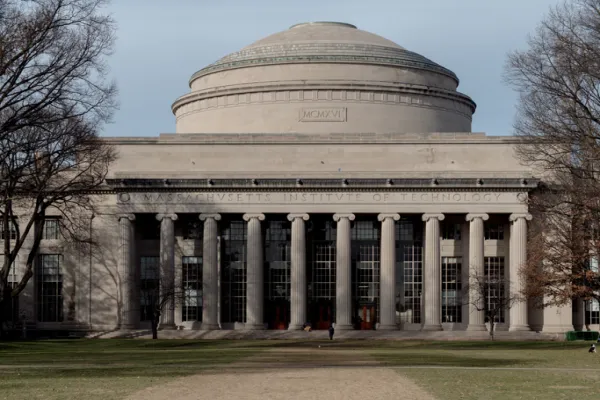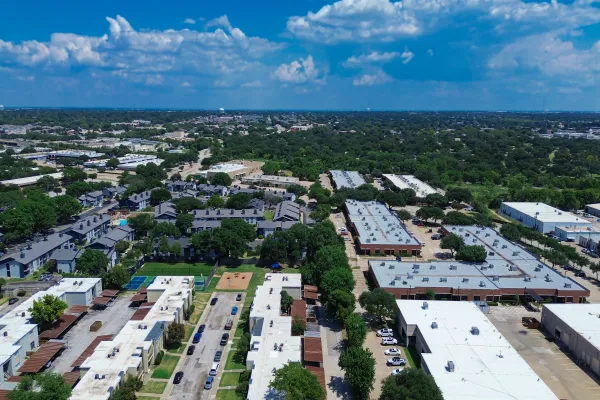To view the rankings, click here.
Get the detailed fee-based Latin America Research Team Report
Take high commodities prices, add surging economies, and mix in strong currencies. That's the Latin American recipe for rising equity markets, and global investors are racing to the table.
"The Latin markets are booming," says Rowe Michels, Bear, Stearns & Co.'s chief of Latin America research and leader of its top-ranked Electric Utilities team. Funds under management in emerging-markets countries have almost tripled in the past two years, he says, and "the money needs somewhere to go."
Last year emerging-markets equity funds alone invested $6.5 billion in Latin American equities, says EmergingPortfolio.com, a fund research firm in Boston. The inflows helped propel a 44.9 percent gain in the MSCI emerging-markets Latin America index in U.S. dollar terms -- on top of a 34.8 percent gain in 2004 and a 67.1 percent jump in 2003. This year the index had climbed 23.3 percent through the end of April.
Many major Latin stock markets are doing even better. Argentina's market, up 59.7 percent last year in dollar terms, rose 52.9 percent this year through April. Brazil was ahead 30.7 percent for the same period, on top of a 50.0 percent gain in 2005. Even in Venezuela, where stocks fell 28.9 percent last year, President Hugo Chávez's hostility to most foreign investors didn't prevent the oil-rich nation's stock market from rising 44.8 percent during the first third of 2006.
Damian Fraser, Latin America research chief at UBS and leader of this year's top-ranked Equity Strategy and Mexico teams, says that the robust markets have encouraged a spate of new issues, especially in Brazil, Chile and Mexico. In 2006 through April, 12 initial public offerings worth $3.97 billion have come to market in Latin America, compared with 13 IPOs worth $3.87 billion in all of 2005 and 11 valued at $2.07 billion in 2004, according to information company Thomson Financial in New York.
In this torrid equity climate, cool-headed analysis is all the more prized. For a fourth straight year, investors seeking Latin equity insights choose UBS as their premier source of ideas: The Swiss firm garners 16 team positions -- one more than it did last year -- scoring the highest in Institutional Investor's 2006 Latin America Research Team. Merrill Lynch and Santander Investment Securities tie for second, with 12 team positions apiece. Tying for fourth are Bear Stearns and Credit Suisse, with ten positions each.
To choose team members, II surveyed almost 290 representatives at more than 180 institutions managing an estimated $115 billion in Latin American equities.
To meet the demand for analysis, most firms have been expanding their research efforts in recent months. Top-ranked UBS, for example, has added three analysts to its Latin equity staff, expanding the total to 18. It also has increased the number of companies under coverage, especially in the transport sector. Bear Stearns has added four junior analysts and expanded its coverage of energy and consumer products companies. Citigroup is expanding its Latin research effort "fairly aggressively, particularly in Brazil," says Latin America strategist Geoffrey Dennis in New York.
Merrill's team of regional equity analysts and economists has grown from 19 last year to 27, says Adam Quinton, the firm's New Yorkbased head of Latin equity research, who adds, "We want to strengthen our small-cap and banking coverage." Joining Merrill recently to cover banking is Valerie Fry, who has led Santander's winning North Andean Countries team since 2004. (Because Fry joined Merrill after the balloting deadline, the votes she received this year are attributed to Santander.)
At Santander, New Yorkbased research chief Patrick Boucher says that with 31 primary analysts covering 135 companies, and with offices in all major Latin countries, his major challenge is to fend off poaching efforts by deeper-pocketed rivals while trying to "avoid the juniorization of research." He notes that in a recent search for a telecommunications analyst in Brazil, Santander resisted hiring a fresh university graduate, instead choosing an investor relations executive at Brazilian telco Empresa Brasileira de Telecomunicações, or Embratel. "Hiring someone who knows an industry from the inside is a different approach," Boucher says.
As firms expand research coverage, they continue to debate the merits of posting analysts in every relevant country versus those of concentrating their research efforts in one or two locations.
"We'd rather spend money on analysts and airfare than floor space," quips Bear's Michels, whose team works chiefly in New York, with a small contingent in São Paulo. He says his firm's approach is founded on a belief that offering clients consistent worldwide and regional perspectives is difficult to accomplish when analysts are spread out over many locations.
UBS takes the opposite tack. Fraser, who runs his team from Mexico City, with analysts in Brazil, New York and London, says that firms with a strong local approach, such as his, do better than those that work from outside the region.
Adriano Seabra of Gap Asset Management, a Rio de Janeiro
based hedge fund with $300 million in Latin assets under management, agrees. "We definitely like the local presence; analysts on the ground get more detailed information faster."
Other clients seem satisfied with the sell-side product regardless of its provenance. Almost 23 percent of the Latin America Research Team respondents who answered our question said they were "very satisfied" with brokerage firms' Latin research; 74.3 percent said they were somewhat satisfied. This compares with almost 27 percent who were very satisfied and 68.7 percent who were somewhat satisfied in 2005. Importantly, those answering "not at all satisfied" declined from 6.7 percent in 2004 (when just 16.2 percent were very satisfied) to 4.4 percent in 2005 to 2.7 percent this year.
Nearly 35 percent say that the quality of sell-side research has improved over the past year. One reason could be that with the region's economies by and large prospering, analysts can spend less time fretting about macroeconomic woes and more time delving into the nitty-gritty of particular companies. "Research is becoming less theoretical and more practical," says Claudia Calich, a New Yorkbased emerging-markets fund manager for Invesco Global Asset Management, which has $205 billion in global assets under management.
The practicality, she observes, may reflect a sea change in Latin markets and economies, which are stronger than they were just a decade ago, with spending under better control and market reforms progressing. There's even talk that Brazil's debt issues could win an investment- grade rating by 2008, joining those of Chile and Mexico. Prosperity is palpable. "Even most maids now have cell phones," says Calich, who is Brazilian.
To be sure, Latin America's politics lean left of center. In May, Venezuelan president Chávez, speaking in London, praised his new ally, the recently elected Juan Evo Morales Ayma in Bolivia, and said that together with Néstor Carlos Kirchner in Argentina, Luís Inácio Lula da Silva in Brazil and Fidel Castro in Cuba, "a new era" in Latin America is beginning with a "major force block" of left-wing governments. In June elections, Peruvian voters will choose between two leftist candidates, Ollanta Humala Tasso and former president Alan García.
Santander's Boucher says that, political risk notwithstanding, what happens in the region's smaller economies matters less than it did in the past. "Venezuela, Bolivia, Peru and Argentina get a lot of bad press," he says, "but Brazil is bigger than all those countries put together."
Brazil is the country of the hour, with a president whose rhetoric has been more leftist than his actions. Falling interest rates and a takeoff in mortgage borrowing have led to a boom in homebuilding and real estate development as well as several IPOs in many industries. Structural improvements in Brazilian markets also are fueling equity interest. Bovespa's five year-old Novo Mercado (the "new market" at the São Paulo stock exchange), which requires listed companies to issue just one class of shares and to follow higher standards of transparency and corporate governance than those on the main exchange, now boasts 28 listings.
Recently, aircraft maker Empresa Brasileira de Aeronáutica, or Embraer, and Brazil's largest fixed-line phone operator, Tele Norte Leste Participações, or Telemar, said they plan to modify their capital structures and voting rules to qualify for Novo Mercado listings, which companies believe will make their shares more attractive to investors.
"The Brazilians are cleaning up the whole [market] structure," says Boucher, who notes that although the number of listings on the new exchange is still small, qualified companies are willing to pay a premium to list there.
The progress of other Latin economies leads UBS's Fraser to feel optimistic. "There's no reason to think that the stability achieved will be lost," he says.
Even the risk that rising interest rates in the U.S. could lure money from Latin markets is not that great, say research chiefs. The U.S. Federal Reserve Board's measured tightening has made the rate rise feel more predictable and hence more manageable. Although higher interest rates are "not good," concedes Merrill's Quinton, he believes that strong prices for commodities like iron ore, oil and copper will help keep Latin companies and economies in solid shape. "High commodities prices," he says, "have proven more than enough of an offset so far."
The ranking was compiled by Associate Editor Sivert Hagen under the guidance of Director of Research Operations Group Sathya Rajavelu, Assistant Managing Editor for Research Evan Cooper and Senior Editor Jane B. Kenney.
Get the detailed fee-based Latin America Research Team Report





